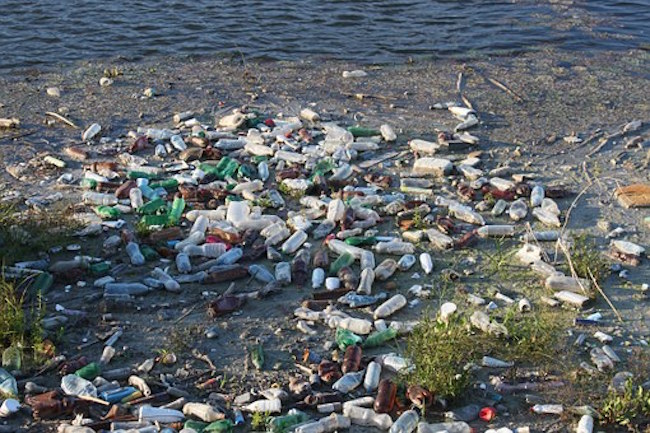No Power, No Running Water, No Toilets: Millions of Americans Are Living in Third-World Conditions by Daisy Luther for The Organic Prepper
Scattered around the nation, there are parts of the country in which millions of Americans are living without the basic amenities that most of us take for granted.
I’m not talking about high-speed internet or frivolous things. I’m talking about electricity, flushing toilets, and clean running water.
But this isn’t a problem that only exists in one state or to one demographic. It’s happening across the nation more and more. Let’s take a look.
Millions are living without running water.
A new report says that more than 2 million Americans in West Virginia, Alabama, Texas and the Navajo Nation Reservation in the Southwest are living without clean running water or indoor plumbing. They’re drinking from polluted streams. They’re carrying buckets of the same water home for washing. They’re urinating and defecating outside with no wastewater treatment.
Race and poverty are the strongest predictors of water and sanitation access, according to the study. Native American families are 19 times more likely than white households to lack indoor plumbing, while black and Latino homes are nearly twice as likely. Meanwhile, federal funding for water infrastructure is just a small percentage of what it used to be, the authors wrote.
“Access to clean, reliable running water and safe sanitation are baseline conditions for health, prosperity, and well-being,” DigDeep CEO George McGraw and US Water Alliance CEO Radhika Fox said in a statement. “However, they remain out of reach for some of the most vulnerable people in the United States.”
The 2 million figure includes 1.4 million people with homes who lack access to hot and cold running water, as well as a sink, shower, bath or flushing toilet. (source)
As well, more than half a million homeless Americans don’t have access to basic sanitation. Nor do almost a quarter of a million people in Puerto Rico, where many of whom are still struggling after Hurricane Maria.
The lack of access to water is happening across the nation, often hidden within wealthier enclaves.
Water-access challenges affect entire communities, not just “isolated individuals choosing to live off the grid,” the authors wrote. The researchers found clustered water problems in Alaska, New Mexico, the Dakotas and Maine, in addition to their focus on six “hotspots”: California’s Central Valley, the Navajo Nation, Texas colonias, the rural South, Appalachia and Puerto Rico.
Notably, these at-risk communities can hide within wealthier counties, the study showed. Overall, one Arizona county highlighted by researchers revealed that just 4 percent of residents overall lacked complete plumbing—but a more local analysis revealed pockets where 40 percent of people lacked access. (source)
Don’t even get me started on all the diseases that can occur when people dispose of their human waste unsafely. I wouldn’t be shocked to see a return of diseases that have all but been eradicated linking back to the lack of plumbing.
Then there are places that have running water but it’s toxic.
It isn’t just a complete lack of running water that is a problem. There is a lack of safe water. Let’s look at Flint, Michigan.
Five years ago, it came out that the city of Flint had been providing tap water to its residents that was tainted with lead, bacteria, and trihalomethanes. At the time this information came to light, there was also an outbreak of Legionnaire’s Disease that traced back to the drinking water.
And to add insult to injury, officials lied about it instead of warning people.
When the crisis began, state and federal officials repeatedly denied that there was any issue with the water, despite clear evidence that there was. Later, officials manipulated test results, downplayed the problem, and lied to residents.
As Michigan Radio’s Lindsey Smith reported:
“The tests were bad enough that [in July 2015], they should have informed the public about the broad lead risk, but that’s not what happened. Instead, state and city officials kept telling residents there was no lead problem in Flint’s water; that this EPA report was wrong; that the report was written by a ‘rogue employee.’” (source)
The EPA says the water in Flint is safe now, but residents are not convinced. Many still rely on bottled water.
But Flint’s mayor, Karen Weaver, has dismissed such declarations as “premature.”
“Nobody wants to say that Flint water is safe to drink more than myself and the residents of Flint, but, before we say it, we want to be absolutely sure it is true,” she said in June in response to Wheeler’s comments. A spokesperson for the mayor told FRONTLINE that Weaver stands by her stance.
Though Flint’s water, which once tested dangerously high for lead, is now within federal safety standards, microbiologists, infectious disease experts and officials including Weaver worry that harmful elements may still remain — and that state and federal regulators aren’t actively testing for them. (source)
And some scientists are also not convinced.
Across the U.S. right now, almost all fatalities from waterborne diseases in the United States are from legionella, and cases have been rising steadily since 2000, according to Mark LeChevallier, a scientist and retired water manager. Legionella testing isn’t common. But LeChevallier, who oversaw more than 300 water systems that served more than 15 million people for private utility American water, believes both state and federal bodies, including the EPA, are responsible for putting new guidelines in place…
…As in other cities, Flint’s Department of Water Services is responsible for tracking the chemical composition of the city’s water. But under both state and federal Safe Drinking Water Acts, government responsibility ends the moment water enters the pipes of a private home — where experts say deadly legionella bacteria are most likely to fester. (source)
Other scientists concur with LeChevallier.
“We don’t know if it’s safe, because the proper studies haven’t been done,” said Marcus Zervos, an infectious disease doctor who sat on the Flint Area Community Health and Environment Partnership (FACHEP), a group hired by the state in 2016 to investigate the Legionnaires’ outbreak. That fall, the team tested the water of 188 randomly selected Flint-area households and found legionella in 12 percent of them.
The state ultimately rejected the team’s work, saying the scientists had “only added to the public confusion,” and that an outside consulting firm the state hired had been critical of their work. (source)
Despite the fact that Michigan has disregarded his warnings, Zervos and other scientists have continued to study the water in Flint.
In 2018, a team including Zervos tested water filters from 10 Flint residents’ homes that they suspected were infected. The results, published early this year in the International Journal of Infectious Diseases, announced that they had found toxic, often antibiotic-resistant bacteria in some filters.
“By us saying that the filters potentially have a problem with them, we were also getting push back [from the state],” Zervos told FRONTLINE. “There are people going around that are saying that it’s normal to have bacteria in the water and that the filters are the solution to this. There are still a lot of questions.”
One of his FACHEP colleagues, University of Michigan professor Nancy Love, said that while the filters distributed in Flint are efficient at removing lead, research suggests they can also harbor harmful bacteria. “Whether the level of those bacteria that end up in filtered water, consumed over long periods of time, is a health risk has, to my knowledge, not been evaluated,” Love said. (source)
As I’ve written previously, the onus is on us to ascertain whether our water is safe or not. You can easily test your tap water for a wide variety of bacteria, viruses, and other harmful substances. And with Flint in mind, I can think of no reason on earth a person would trust the local government to warn them about unsafe water.
Contaminated water isn’t isolated to Flint.
While it would be easy to say that this situation only happened in Flint to poor families, that would be an incorrect assumption. At least ten other cities have dangerously high levels of contamination.




